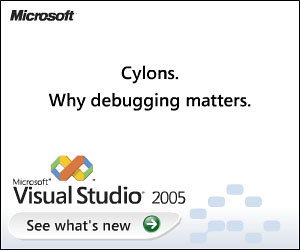I've been going through few weeks worth of the Apple's java-dev mailing list posts, and noticed one that referenced a David Pogue column in NYT from two and a half weeks ago that itself quotes an interview with Steve Jobs centered on iPhone. When Jobs is asked about Java support on iPhone, he says:
"Java’s not worth building in. Nobody uses Java anymore. It’s this big heavyweight ball and chain."This is worrisome. Jobs didn't explicitly reduce the scope of his statement to iPhone and/or mobile phones in general, although since the interview itself was about iPhone, one can give him the benefit of the doubt and assume the "Nobody uses Java anymore" doesn't apply to the computing world outside the mobile devices and won't affect availability of JDK on Mac OS X in the future. (Which, by the way I do find a bit lacking - JDK/JRE on Mac OS X is still stuck at 1.4.2_09 and 1.5.0_06, while the Linux/Solaris/Windows crowd has long since moved on to much higher service releases.)
Actually, as far as mobile devices are considered, I can agree with Jobs that on them Java is indeed "heavyweight ball and chain". John Carmack writes on his blog about difficulties writing DoomRPG and Orcs&Elves for mobile devices using Java here and here, preferring to use BREW as its alternate development platform, with most memorable sentence being:
... it isn't that BREW is inherently brilliant, it just avoids the deep sucking nature of java for resource constrained platforms...and:
The biggest problem is that Java is really slow. On a pure cpu / memory / display / communications level, most modern cell phones should be considerably better gaming platforms than a Game Boy Advanced. With Java, on most phones you are left with about the CPU power of an original 4.77 mhz IBM PC, and lousy control over everything.
So yes, Java on mobile devices is a frustration. I still wished Jobs didn't make an overly generic statement...
